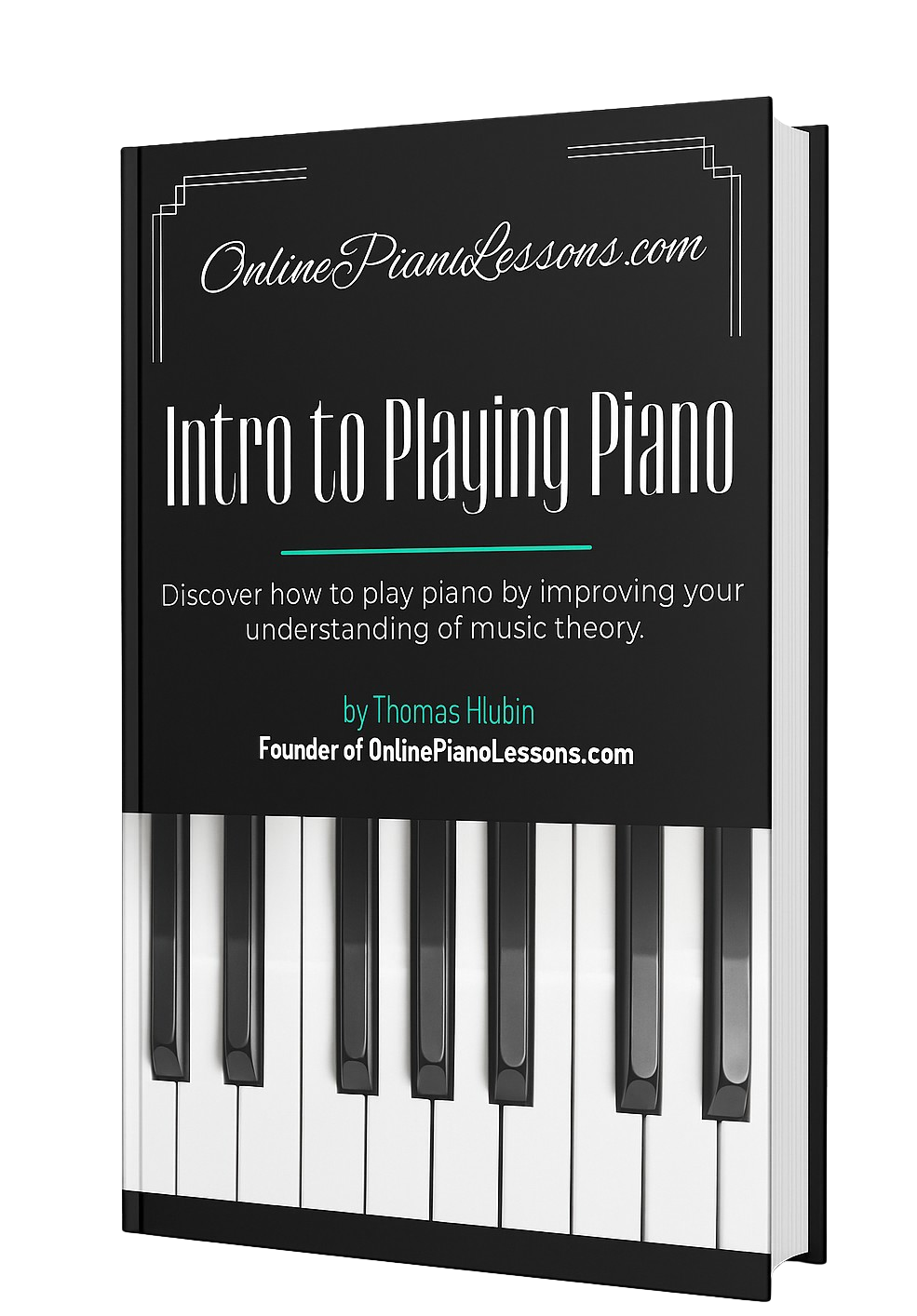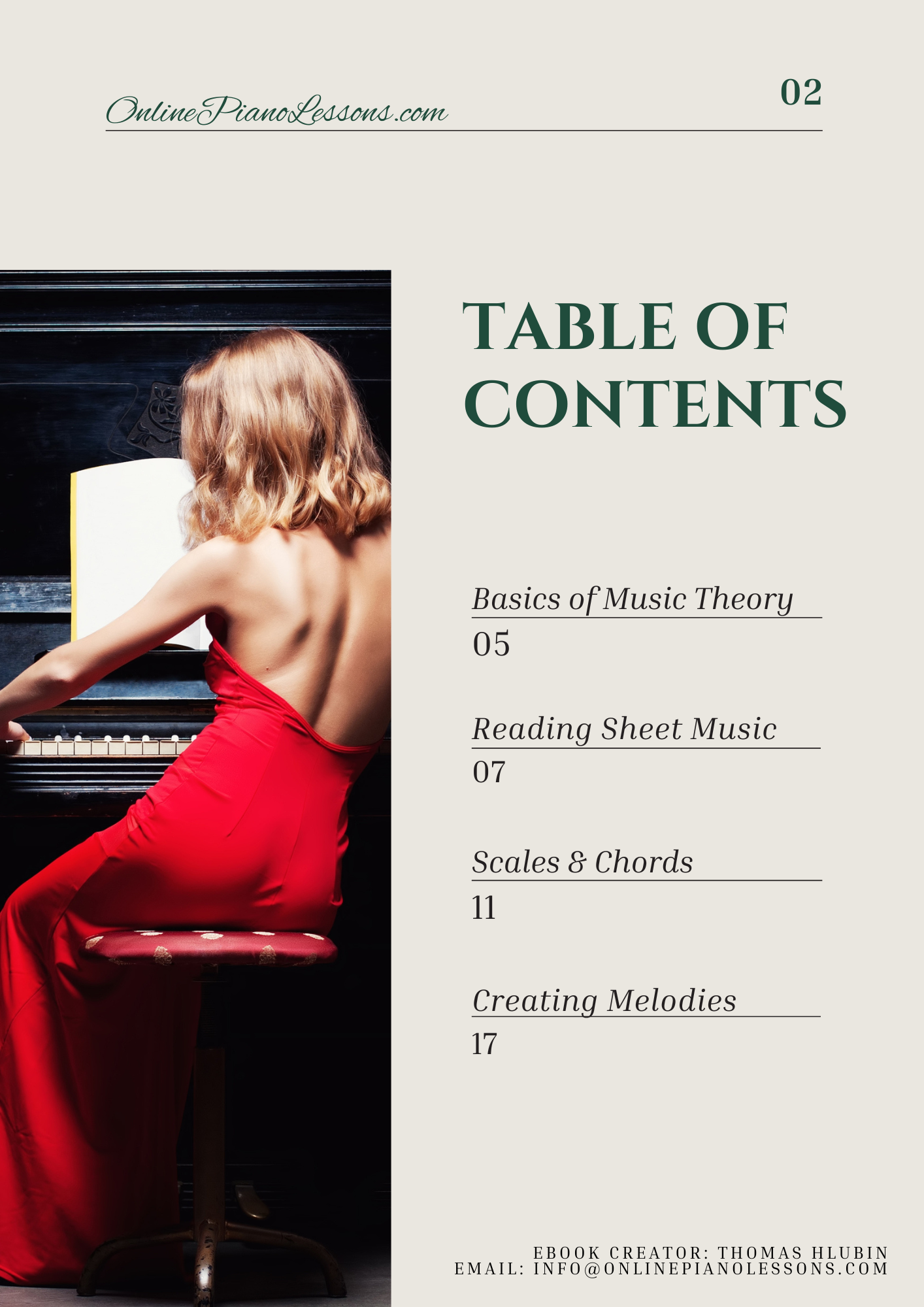At the simplest level, dyad chords are any harmonic sonority made of 2 notes sounded together. On the piano, that can be as simple as pressing C and G, or as subtle as an adjacent semitone cluster like E and F. While the word “chord” often implies three or more notes, dyad chords are widely used because 2 notes can imply a full harmony without spelling it out.
Because they contain only 2 notes, dyads are ambiguous by design — they can suggest major/minor harmonies, open fifths, clusters, or contrapuntal intervals depending on context, inversion, and surrounding harmony. On the piano, dyad chords are a fast way to create color without overcrowding the texture.
Why Use Dyad Chords on Piano?
- Sonic clarity: Two notes occupy less frequency space than full chords, leaving room for melody and bass.
- Harmonic ambiguity: A pair of 2 notes can imply different chords depending on context — useful for modal or ambiguous writing.
- Rhythmic punch: Dyads cut through mixes in pop/rock arrangements because the 2 notes form a tight, percussive block.
- Voice-leading: Moving one note of the 2 notes while holding the other creates smooth connections.
- Practicality: On the piano, you can play dyads easily with one hand or split them between hands for complex textures.
Use dyad chords when you want simplicity with maximum musical suggestion.
Types of Dyad Chords and What they Sound Like
Below are common dyad chords you’ll encounter on piano, described in terms of intervals (the distance between the 2 notes) and typical uses:
- Perfect Fifth (root + 5th) — e.g., C–G. Often called a “power dyad” (think power chords on guitar). On the piano this gives an open, non-committal sound (no third present).
- Perfect Fourth (root + 4th) — e.g., C–F. Similar openness to the 5th, commonly used in bass/melody pairings.
- Major/Minor Third (root + 3rd) — e.g., C–E (major), C–E♭ (minor). These dyad chords imply the chord quality strongly because the 3rd defines major/minor.
- Seconds (major/minor 2nd) — e.g., C–D or C–D♭. Dissonant or coloristic; perfect for cluster textures on piano.
- Sixths (6th) — e.g., C–A. These are inversions of thirds and sound lyrical on piano.
- Sevenths & Tritones — e.g., C–B♭ (7th) or C–F♯ (tritone). These dyad chords add tension and jazz flavor.
Every pair of 2 notes forms an interval; thinking in intervals is the fastest way to find and use dyad chords on the piano.
How Dyad Chords Function Harmonically
Because a dyad contains just 2 notes, its function depends heavily on context:
- Implying harmony: A 3rd dyad (C–E) implies a C major triad even though the G is missing. On the piano, a melody or bass note can supply the missing tone.
- Neutral foundations: 5th dyads (C–G) don’t specify major or minor, which is perfect when you want modal or ambiguous harmony on the piano.
- Tension & resolution: Dyads containing dissonant intervals (2nds, tritones) create forward motion that can resolve to more stable dyads or full chords.
- Parallel color: Simple parallel movement of 2 notes is the backbone of many pop hooks and film ostinatos on piano.
Think of dyad chords as “mini-chords” that hint rather than declare; they let the listener fill in harmonic context.
Practical Ways to Find Dyad Chords on Piano
- Stack thirds and then remove notes — Build a triad, then omit one note so you’re left with 2 notes that still imply the harmony. For example, C–E–G → remove G → C–E (a dyad).
- Interval scanning: Play all combinations of 2 notes in a small range to hear which interval you like. On the piano, scanning octaves and close-interval dyads reveals interesting colors.
- Bass + guide-tone: On the piano, pair a bass root (left hand) with a guide-tone (3rd or 7th) in the right hand — that’s a dyad approach used in jazz comping.
- Borrow from guitars: Translate popular guitar power-chord shapes (root + fifth) to the piano for percussive band textures.
- Melody harmony: Harmonize a melody note with a fixed interval (a 3rd or 6th) below/above to create consistent dyad chords across a phrase.
Use these methods to build a palette of dyads on the piano you can deploy instantly.
Voicing Tips for Piano Players
- Split between hands: Put one of the 2 notes in left hand (for bass emphasis) and the other in right hand for balance.
- Use pedal sparingly: Sustaining both of the 2 notes with pedal can blur clarity — use short pedal or none if you want a crisp dyad.
- Register matters: The same 2 notes an octave apart create a vastly different feel; experiment on the piano with low versus high dyads.
- Add passing tones: Slide a passing note between the 2 notes to create movement without filling the harmony.
- Stack with other dyads: Multiple dyads in different registers can form quartal or dense textures without full triads.
Good voicing turns simple 2 notes into expressive textures on the piano.
Genres and Practical Examples
- Rock & pop: Power dyads (root + 5th) on piano emulate guitar power chords; use them in rhythmic patterns.
- Jazz: Shell voicings (3rd + 7th dyads) are central to modern jazz comping on piano — the bassist supplies the root.
- Classical & minimalist: Reich and Glass use interlocking dyads to build hypnotic patterns; on the piano, small 2-note cells evolve over time.
- Film & ambient: Dyads create ambiguous, open textures that suit underscore—great for piano layering.
Across styles, dyad chords let the piano occupy space without crowding the mix.
Exercises: Build Facility with Dyad Chords on Piano
- All-interval scan: Pick one root and play all intervals above it (2nd, 3rd, … octave). Name the interval and notice the color. Repeat in every key.
- Voice-leading drill: Choose a dyad (e.g., C–E) and move to a target dyad (A–C) by changing one note at a time on the piano. Keep the other note sustained.
- Shell-voicing practice: On the piano, play left-hand root, right-hand 3rd+7th dyad; practice moving through ii–V–I using dyad comping.
- Transcribe & play: Find a band recording with a prominent dyad part and reproduce it on the piano — identify the 2 notes and their function.
These targeted drills make recognizing and using dyad chords second nature on the piano.
Notation and Labeling
In lead sheets you’ll often see simple interval notation or two-note chord symbols (e.g., C5 for a fifth dyad). On the piano, it’s common to notate 2 notes directly on the staff. For jazz lead sheets, “C–E” might be implied by Cmaj or C6 depending on context; learn to read the 2 notes when they’re written and to infer them when they’re not.
Common Mistakes and How to Avoid Them
- Overusing 5ths in low register: A low C–G pair can sound muddy on the piano; add an octave or move registry.
- Ignoring context: Playing 2 notes that imply a major sonority over a minor progression can clash — listen for the larger harmony.
- Poor voice-leading: Jumping both notes between dyads makes the line clumsy. Change one of the 2 notes and keep the other to smooth motion.
Careful listening and small edits solve most dyad pitfalls on the piano.
Putting Dyad Chords into Arrangements
- For pop, lock the left hand into a rhythmic pattern with the lower of the 2 notes and let the right hand play color dyads on the offbeats.
- For solo piano, combine a bass line with upper dyads to suggest full harmony without playing full block chords.
- For film scoring, layer multiple dyads with varied reverb to make a shimmering carpet of 2-note sonorities.
Dyad chords offer flexible arrangement options on the piano that scale from intimate solo pieces to full-band contexts.
Conclusion
Mastering dyad chords on the piano is a quick way to instantly upgrade your harmonic palette. Because they’re just 2 notes, they’re simple to learn but rich in creative possibilities — from gritty pop hooks to subtle cinematic textures. Practice the exercises above and you’ll begin to hear how much can be said with only 2 notes.
FAQ — Dyad Chords on Piano
Q: What exactly is a dyad chord?
A: A dyad chord is any harmonic sonority made of 2 notes played together. On the piano, it’s the simplest chord-like structure and can imply larger harmonies.
Q: Why play only 2 notes instead of full chords?
A: Playing 2 notes can free space in the arrangement, create ambiguity or tension, and let other instruments or the bass fill in missing tones—especially useful on the piano.
Q: Are dyads just for guitarists and rock music?
A: No—while power dyads (root + 5th) are popular in rock, dyad chords are used across jazz, classical, pop, and film scores on the piano.
Q: How do I practice dyad chords on piano?
A: Practice interval scans, shell voicings, and voice-leading drills. Build a library of useful 2-note combinations in all keys.
Q: Will dyads sound weak on piano compared to full chords?
A: Not if voiced well. The piano can project 2 notes clearly; combined with good registry and pedal choices, dyads can be very powerful.




 Hi, I'm Thomas, Pianist Composer,
Hi, I'm Thomas, Pianist Composer,  I love playing piano, creating new melodies and songs, and further developing my online piano course and making updates/additions to my site OnlinePianoLessons.com!
I love playing piano, creating new melodies and songs, and further developing my online piano course and making updates/additions to my site OnlinePianoLessons.com!  Now that is what I call fun!
Now that is what I call fun!
